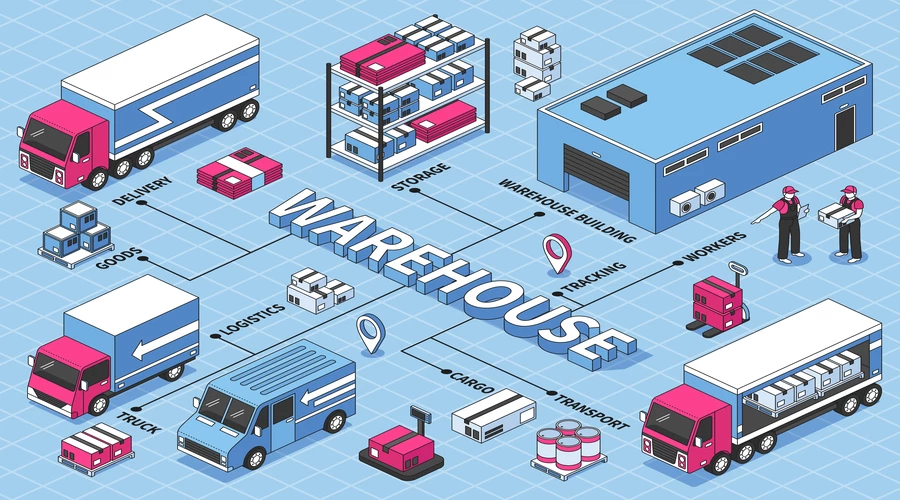In the fast-paced world of logistics and supply chain
management, efficient warehouse operations are crucial for businesses to stay
competitive. One key aspect of optimizing warehouse efficiency is designing an
effective layout. A well-organized warehouse layout can streamline operations,
reduce errors, and enhance productivity. In this blog post, we'll explore ten
essential tips for warehouse layout optimization that can help businesses
maximize space utilization, improve workflow, and ultimately boost
profitability.
- Understand
Your Inventory: Before designing or optimizing a warehouse layout,
it's essential to have a thorough understanding of your inventory. Analyze
your product mix, storage requirements, and demand patterns to determine
the optimal storage solutions and layout configurations.
- Implement
ABC Analysis: Use the ABC analysis technique to categorize inventory
based on its value and turnover rate. This classification allows you to
prioritize storage and picking locations, ensuring that high-demand items
are easily accessible while optimizing space for slower-moving inventory.
- Utilize
Vertical Space: Don't overlook the vertical space in your warehouse.
Implementing vertical storage solutions such as pallet racking systems,
mezzanine floors, and shelving units can significantly increase storage
capacity without expanding the footprint of your facility.
- Optimize
Slotting: Proper slotting of inventory involves strategically
assigning storage locations based on factors such as size, weight, and
picking frequency. By organizing products logically and minimizing travel
distances, you can streamline picking operations and reduce labor costs.
- Implement
Lean Principles: Apply lean principles such as 5S methodology and
continuous improvement to eliminate waste and optimize workflow. Keep work
areas clean and organized, establish standardized processes, and regularly
review and refine your warehouse layout for maximum efficiency.
- Invest
in Automation: Consider investing in automation technologies such as
conveyor systems, automated storage and retrieval systems (AS/RS), and
robotic picking solutions to increase throughput and reduce labor costs.
Automation can streamline material handling processes and improve overall
warehouse productivity.
- Design
Efficient Work Zones: Divide your warehouse into distinct work zones
based on specific functions such as receiving, picking, packing, and
shipping. Design each zone with efficient workflows and clear pathways to
minimize congestion and optimize throughput.
- Utilize
Cross-Docking: Implement cross-docking strategies to reduce inventory
holding times and streamline order fulfillment. By transferring goods
directly from inbound to outbound shipments with minimal handling and
storage, you can improve order cycle times and reduce storage costs.
- Prioritize
Safety: Safety should always be a top priority in warehouse
operations. Design your layout with clear aisle markings, designated
pedestrian walkways, and safety barriers to prevent accidents and
injuries. Invest in proper training for warehouse staff and regularly
conduct safety audits to identify and address potential hazards.
- Regularly
Evaluate and Adapt: Warehouse optimization is an ongoing process that
requires regular evaluation and adaptation. Monitor key performance
indicators (KPIs) such as order accuracy, inventory turnover, and
throughput rates to identify areas for improvement. Continuously seek
feedback from warehouse staff and stakeholders to refine your layout and
processes for optimal performance.
By following these ten essential tips for warehouse layout
optimization, businesses can create a more efficient, productive, and
cost-effective warehouse environment. From maximizing storage space to
streamlining workflows and prioritizing safety, implementing these strategies
can help businesses stay ahead in today's competitive marketplace.
For more insights on warehouse management and optimization,
visit 13SQFT's blog.
